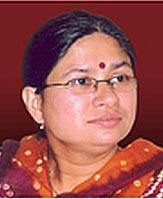The impacts of linking NREGA payments to UID: A Study of Maharashtra
India undertakes substantial transfers to the poor under various programs. Total transfers from the Central government amount to at least 2% of GDP. Transfers to the rural poor come in various forms; either as direct subsidies (like the PDS), or via the implementation of government programs administered through the Panchayat system. The National Rural Employment Guarantee Act (NREGA) is the second largest poverty alleviation programme of the Central government. This program extends across the country and is the largest public employment program in the developing world (Ambasta et. al. 2008). NREGA operates in rural areas and gives individuals the right to `demand' work. The government has the obligation to start public works involving manual labour to meet this demand and workers are paid accordingly.
NREGA has been operational since 2006 with mild success. On the one hand the reach of the program continues to grow, however on the other hand, it is plagued by reports of poor implementation and systemic corruption (Vanaik 2008, Bhatia and Dreze 2006).
The main policy question is how can government improve the delivery of the NREGA program. In this context, the government is in the process of implementing a nation-wide program to provide every citizen of India with a unique biometric identification (UID). The general idea is to provide a platform that can be used to authenticate transactions and hence reduce corruption. The research question posed in this project is whether and how UID improves the delivery of the NREGA program.
Our goal is to answer this question with the help of a controlled experiment. Two blocks in a district of rural Maharashtra are selected. In one block, the government implements a wage payment system based on electronic money transfers and a UID based authentication mechanism. In the other block, wage payment systems continue as before.
At this point, we have available a pre-treatment survey. Once the post-treatment survey is done (expected later in the year), we will have the information to comment on the efficacy of the use of UID in making wage payments.
Information from a baseline survey is suggestive, however, of existing governance of NREGA and how UID might help. There are significant delays in wage payments. Workers are not well informed about their earnings. Information and access are filtered through interested intermediaries. Although there is a perception of under-payment, their lack of access to information does not empower them to seek enforcement of their dues. Patron-client relationships characterise the contact between the local elected officials (administering the program) and beneficiaries. Can UID change the prevailing local political economy? We hope to have some answers from the follow-up surveys.






